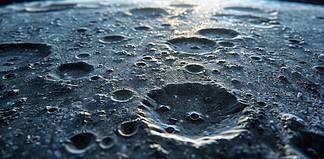By Rachel Dally-Watkins
18 May, 2015
WITH a theme of optimising performance and maximising productivity, the upcoming Iron Ore 2015 conference and exhibition is particularly timely.
The iron ore price has halved in the past year as a result of increased supply and falling Chinese demand, dropping below US$50 per tonne (for the first time in a decade) in early April before a slight upswing taking it closer to US$60/t by May.
Iron Ore 2015 chair and CSIRO Mineral Resources Flagship portfolio leader – carbon steel Dr Ralph Holmes said given the hard times being experienced by the industry, the conference’s 2015 theme made a lot sense, as companies looked to reduce costs and improve efficiency.
“The theme of the conference…is particularly relevant at present as new projects and expansions bed down after an unprecedented period of major growth and iron ore market conditions become more volatile and extremely challenging following the precipitous fall in iron ore prices,” Dr Holmes said.
“This conference differs from others in that we’re more focused on the technical aspects rather than some other conference organisers where it’s more about selling their wares, promoting their particular operations or their deposits.
“I think for the moment the theme of the conference is dead on in terms of what people need to do in the current environment – get the maximum out of what they’ve got in the ground to actually produce iron ore at a sustainable price.”
The conference
The conference, jointly organised by The Australasian Institute of Mining and Metallurgy (AusIMM) and CSIRO, has been running in WA every second year since 2002; this year it will be held at the Perth Conference and Exhibition Centre from 13 to 15 July.
“This year’s conference, Iron Ore 2015, is the seventh in the series and will again feature recent developments in the genesis, geology, exploration, mining and processing of iron ores, including project development, new equipment, logistics, environmental management and market outlook,” Dr Holmes said.
“The conference will provide unparalleled networking opportunities and time for geologists, geoscientists, mineralogists, metallurgists, managers, engineers, operators, equipment manufacturers and reagent suppliers involved in all aspects of the iron ore industry to reflect on recent developments and how they can be put to good use in industry.”
While Dr Holmes said the current market meant they expected numbers to be down slightly from the more than 650 people that attended in 2013, AusIMM and CSIRO still expected a good turnout, with more papers submitted to date than in previous years.
“Certainly the numbers are expected to be down but I don’t expect it to be a gloomy event,” Dr Holmes said.
Keynote speakers for the event will include Professor Kevin Galvin from the Newcastle Institute for Energy and Resources – an institute developed to provide a multidisciplinary model for transformational research in energy and resources by bringing together the University of Newcastle’s leading researchers; CSIRO Minerals Down Under Flagship research director Anna Littleboy; Nippon Steel and Sumitomo Metals Ironmaking Technology Division general manager and executive counsellor Dr Koji Saito; BHP Billiton general manager of exploration Joe Knight; Rio Tinto Iron Ore Pilbara mines managing director Michael Gollschewski; Metalytics managing director John Barkas; and WA Finance, Mines and Petroleum minister Bill Marmion.
The technical papers will cover nine areas: environment, exploration, geostatistics and ore reserve estimation, logistics and utilities, mining, new equipment, ore characterisation, project development, and technical marketing.
“The program covers a wide area – there are papers on the environment, issues of below water-table mining and exploration; and certainly looking at better understanding some of the new and old deposits in the Pilbara area in particular,” Dr Holmes said.
“Each year there are papers on geostatistics and ore reserves estimation, and on better reconciling what you think is in your mine with what you actually produce; logistics and utilities, water scheme options for dewatering which is an issue for the future; and debottlenecking iron ore transport from mine to plant, which is all about sweating resources and maximising productivity.
“There’s a paper about an issue which has been very topical in the last few years – transportable moisture limits for iron ore. Then there will be papers there looking at optimising the mining chain and looking at alternative ways of actually doing the mining…and there’s quite a swag of papers on ore characterisation, because it is important to understand the nature of the ore to know how best to process the ore and then to sell it to customers overseas.
“And finally we have a number of papers on project development, just looking at some of the magnetite operations, case studies for value chain optimisation, project development and regulation.”
The exhibition and sponsorship
The exhibition component of Iron Ore 2015 will allow contractors, service providers, manufacturers and supplies to show their offerings and promote what they can do for the industry – something Dr Holmes said was important during tough times.
Visitors will have the chance to meet face to face with exhibitors and be introduced to the latest technologies and services. At the time of print, about 50 exhibitors were lined up for the event, including the event’s gold sponsors, FLSmidth (a leading supplier of equipment and services to the global cement and minerals industries),Fluor (one of the world’s leading publicly traded engineering, procurement, fabrication, construction, maintenance and project management companies), the Newcastle Institute for Energy and Resources (established by the University of Newcastle to provide a multidisciplinary model for transformational research in energy and resources) and Weir Minerals (specialists in delivering and supporting slurry equipment solutions for global mining and mineral processing, the power sector and general industry). Sustainable technology and services company Outotec will also be sponsoring the conference proceedings for the first time.
“There will also be plenty of networking opportunities,” Dr Holmes said.
“All the mornings and afternoon teas, as well as the lunch, are held in the exhibition area so there’s ample opportunities there both for people to visit the exhibitor stands and also to interact with one another.
“We also have a conference dinner as well which provides more networking opportunities.”
Workshops and tours
As part of Iron Ore 2015, AusIMM and CSIRO will be offering a number of workshops and technical tours allowing delegates the opportunity to participate in specialised course content.
“We’re offering four workshops this year, one of which is going to be held in Brisbane the week before the conference – which will be run by CSIRO – titled Iron Ore, Sinter and Coke Optical Image Analysis/Characterisation and CSIRO Software Mineral4/Recognition4; it’s all about this issue of ore characterisation and trying to automate it.”
The second workshop, ARC Research Hub for Advanced Technologies for Australia Iron Ore presents: TUNRA Bulk Solids – Materials Handling and Transfer Design, will run in Perth immediately prior to the conference.
“This is a rather topical subject at the moment, as some mining operations are going below the water table and therefore getting into the more wet, sticky type ores – so materials handling and transfer design is pretty critical to getting it right so the system doesn’t clog up,” Dr Holmes said.
Xstract Mining Consultants will conduct the third workshop, titled Iron Ore – Exploration to Market, which will provide an insight into the fields of geology, mining, metallurgy and engineering in relation to the market.
The final workshop, held after the final day of the conference and exhibition, is titled Geometallurgy and Advanced Characterisation of Iron Ores and presented by CSIRO.
Iron Ore 2015 will also present unique opportunities to join a post-conference technical tour – the flagship Pilbara tour, one of three laboratory tours (Bureau Veritas Minerals Metallurgical and Assay Facilities; ALS Minerals Iron Ore Technical Centre; and SGS Laboratories) and the Arrium Mining tour.
“We run a Pilbara tour for each conference, where we charter an aircraft for a couple of days and fly to selected operations in the Pilbara,” Dr Holmes said.
“We get quite a lot of interest in that because it’s not too easy these days to get approval to visit iron ore sites, so this gives delegates a unique opportunity to view these operations.”
The 2015 tour will take in BHP Billiton’s loading facilities at Nelson Point in Port Hedland; explore the mining and processing operations at Fortescue Metals Group’s Christmas Creek mine and Solomon Hub site; and visit Rio Tinto’s West Angelas operations.
“It includes an interesting smorgasbord of existing and new operations, taking in both mine and port operations,” Dr Holmes said.
“The Arrium Mining tour is one we haven’t run before. What we propose for this one is to meet delegates in Adelaide, and then charter an aircraft to fly them to the company’s operations in Whyalla – probably the Iron Duke mine in the Middleback Ranges – to have a look at both hematite and magnetite mining operations.
“We’ll also have a good look at the pellet plant in Whyalla, which is currently pelletising magnetite concentrate for feeding to the Whyalla blast furnace.”











































